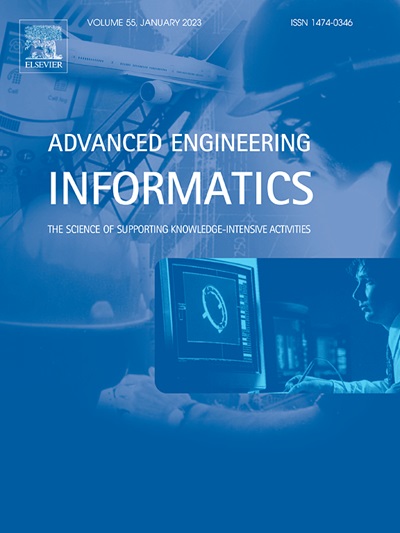Physics-informed neural network for load sway prediction in travelling autonomous mobile cranes
IF 8
1区 工程技术
Q1 COMPUTER SCIENCE, ARTIFICIAL INTELLIGENCE
引用次数: 0
Abstract
Excessive load sway is a critical safety concern during crane operations, exposing cranes to risks of instability and collision with surrounding objects. Existing methods for predicting load sway struggle with inefficiency and inaccuracy. Advances in robotics and automation have led to the robotisation of cranes, enhancing both safety and efficiency. This paper proposed a physics-informed neural network (PINN) for predicting the load sway of autonomous mobile cranes (AMCs) in base-moving conditions, and introduced a transfer learning (TL) framework to address complexities in AMC dynamics while reducing the need for extensive training data. Initially trained on numerically simulated data with simplified dynamics, the PINN was subsequently fine-tuned using real-world data, which included realistic dynamic uncertainties and complexities. Numerical simulations and laboratory experiments were conducted to validate the PINN’s performance. The proposed PINN accurately predicted payload motion and maintained robust performance in both numerical simulations and laboratory experiments while exhibiting superior computational efficiency, requiring only 12.5% of the time needed by traditional dynamic models for 1 s prediction windows. Furthermore, it was compared and outperformed other machine learning models, including recurrent neural networks (RNN), long short-term memory (LSTM) networks and multilayer perception (MLP). These findings indicate that the proposed PINN provides a robust and efficient solution for sensorless load sway prediction in crane operations.
求助全文
约1分钟内获得全文
求助全文
来源期刊

Advanced Engineering Informatics
工程技术-工程:综合
CiteScore
12.40
自引率
18.20%
发文量
292
审稿时长
45 days
期刊介绍:
Advanced Engineering Informatics is an international Journal that solicits research papers with an emphasis on 'knowledge' and 'engineering applications'. The Journal seeks original papers that report progress in applying methods of engineering informatics. These papers should have engineering relevance and help provide a scientific base for more reliable, spontaneous, and creative engineering decision-making. Additionally, papers should demonstrate the science of supporting knowledge-intensive engineering tasks and validate the generality, power, and scalability of new methods through rigorous evaluation, preferably both qualitatively and quantitatively. Abstracting and indexing for Advanced Engineering Informatics include Science Citation Index Expanded, Scopus and INSPEC.
 求助内容:
求助内容: 应助结果提醒方式:
应助结果提醒方式:


